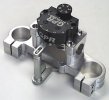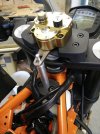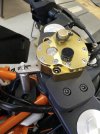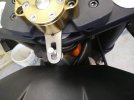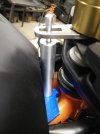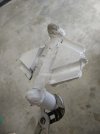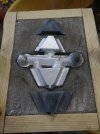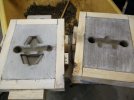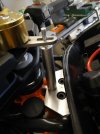Racers and street riders have been asking for a steering damper for the RC390, so it's time they got one! Introducing the Formula390 RC Steering Damper!
NO drilling of the triple tree or frame required! Initial prototyping for the mounting hardware is complete. We ended up having to abandon the idea of using a tubular style damper. Try as we might, it just will NOT fit! Even the shorty one we tried kept running into interference issues. So, we are going with the Scotts style damper!
The top bracket will mount to the top of the triple tree, and the bottom bracket will mount to the frame just in front of the battery box.
Initial prototyping was done in plastic with a 3D printer. Production models will be aluminum.
Here's what the frame mount brackets look like up close.
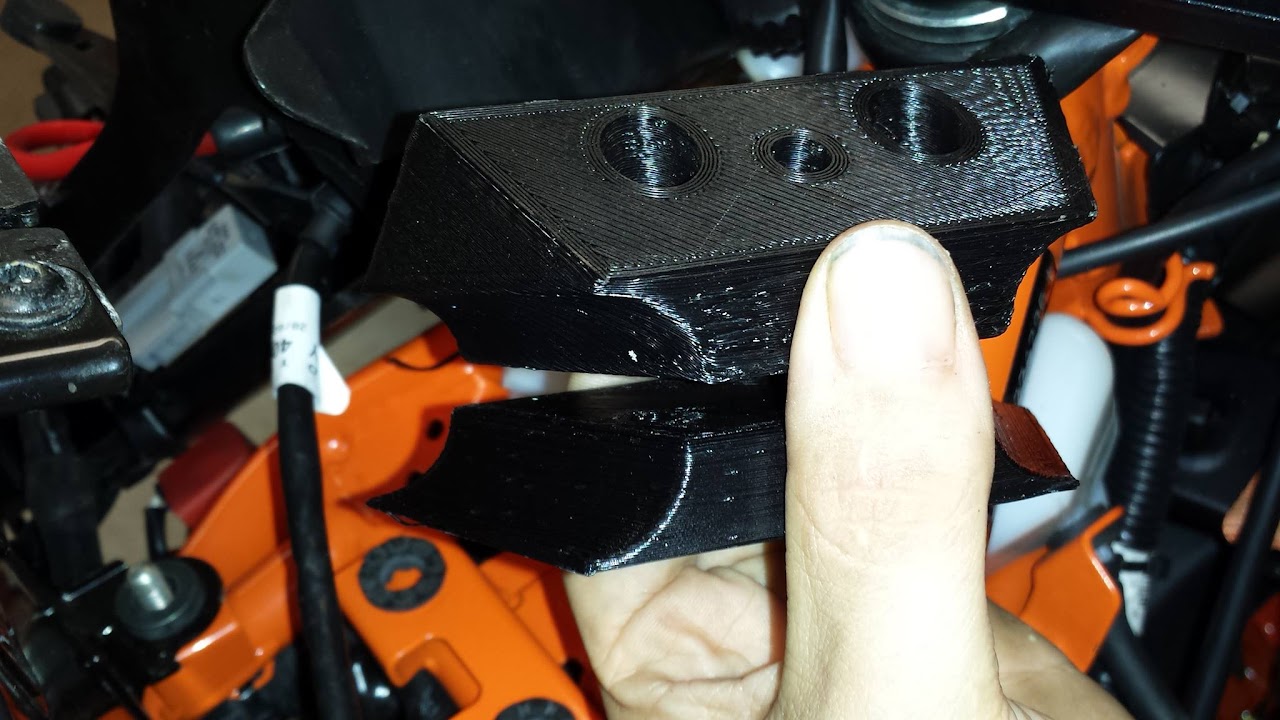
Showing the fitment with a dowel used in the pin mounting bolt hole to test and check where the pin meets in relation to the upper mount bracket.
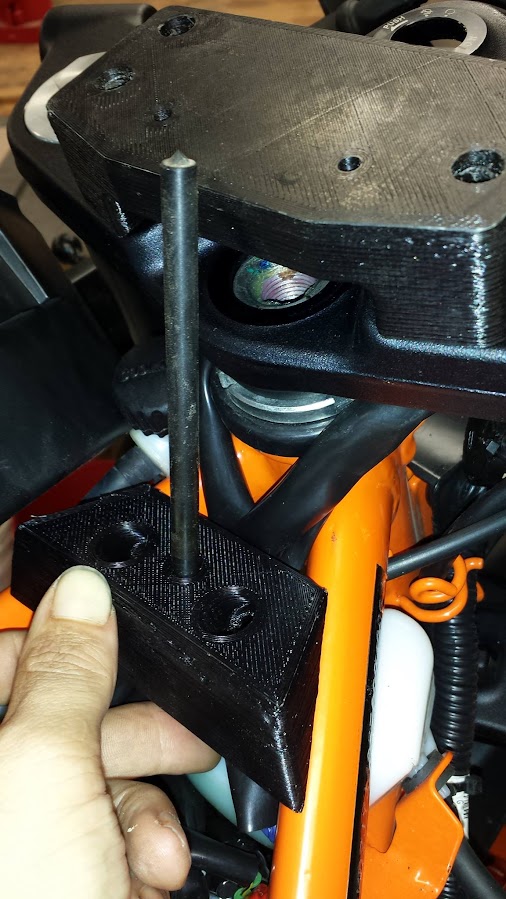
Closeup showing the frame bracket in relation to the battery box.

Testing fit with the battery box cover on.

As stated, these are the prototyped pieces created on the 3D printer. The final pieces will be made from aluminum, and the pin between the frame mount and the damper will be a solid 1/2 rod which is threaded and bolted to the frame mount upper piece from below with an 8mm cap screw. In the top of the rod, will be the steering damper pin which connects to the dampers control arm.
Note: Originally I'd intended to use a tubular style damper, but I just Could NOT get it to fit!!! Every method of mounting I'd tried ran into interference issues with the bodywork, fan, radiator, or fork tubes... so, that's when the design changed over to the Scotts type damper which mounts to the upper triple tree. I've tested fit with a 3D printed mock-up of the damper which was made to dimension from the published drawings. I have several styles on order, including a generic Chinese copy, a GPR V4, and a Scotts. The mounting hardware will be tested with all three, so folks can decide which style they want to use based on their preferences, and budget.
Production units should likely be available in about 2 weeks, maybe 3, depending on how trials go and how much work it takes to get everything aligned. There's plenty of room using this style of connection however (well, if one considers 1/2" or so "plenty" but us machinists target 0.001" for accuracy, so -I- consider that to be PLENTY of room! LOL
NO drilling of the triple tree or frame required! Initial prototyping for the mounting hardware is complete. We ended up having to abandon the idea of using a tubular style damper. Try as we might, it just will NOT fit! Even the shorty one we tried kept running into interference issues. So, we are going with the Scotts style damper!
The top bracket will mount to the top of the triple tree, and the bottom bracket will mount to the frame just in front of the battery box.
Initial prototyping was done in plastic with a 3D printer. Production models will be aluminum.
Here's what the frame mount brackets look like up close.
Showing the fitment with a dowel used in the pin mounting bolt hole to test and check where the pin meets in relation to the upper mount bracket.
Closeup showing the frame bracket in relation to the battery box.
Testing fit with the battery box cover on.
As stated, these are the prototyped pieces created on the 3D printer. The final pieces will be made from aluminum, and the pin between the frame mount and the damper will be a solid 1/2 rod which is threaded and bolted to the frame mount upper piece from below with an 8mm cap screw. In the top of the rod, will be the steering damper pin which connects to the dampers control arm.
Note: Originally I'd intended to use a tubular style damper, but I just Could NOT get it to fit!!! Every method of mounting I'd tried ran into interference issues with the bodywork, fan, radiator, or fork tubes... so, that's when the design changed over to the Scotts type damper which mounts to the upper triple tree. I've tested fit with a 3D printed mock-up of the damper which was made to dimension from the published drawings. I have several styles on order, including a generic Chinese copy, a GPR V4, and a Scotts. The mounting hardware will be tested with all three, so folks can decide which style they want to use based on their preferences, and budget.
Production units should likely be available in about 2 weeks, maybe 3, depending on how trials go and how much work it takes to get everything aligned. There's plenty of room using this style of connection however (well, if one considers 1/2" or so "plenty" but us machinists target 0.001" for accuracy, so -I- consider that to be PLENTY of room! LOL

